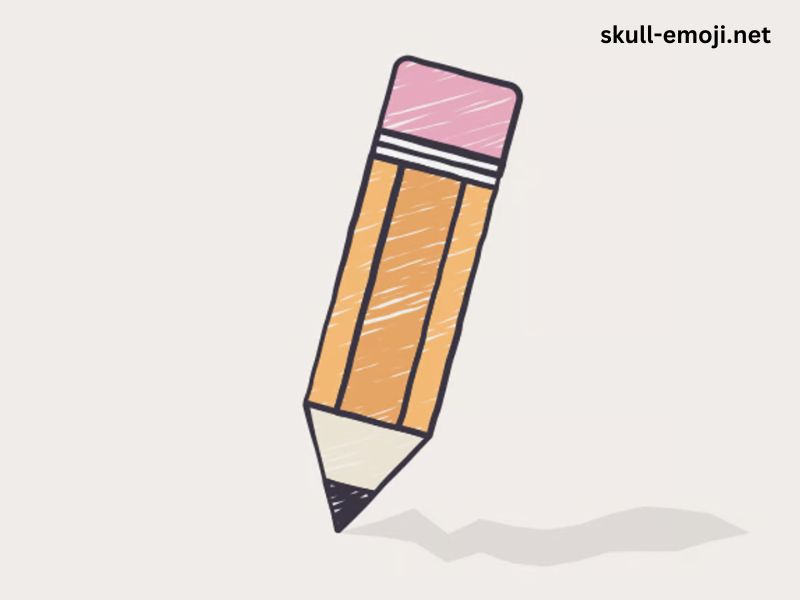Drawing is an art form that allows us to express our creativity and observe the world around us. One common object that can serve as a great subject for both beginners and experienced artists alike is the pencil. Not only is it a tool we use for drawing, but it also has a simple yet distinctive shape that makes it an ideal subject for practice. In this article, we will go through the step-by-step process of drawing a pencil, ensuring you gain confidence and develop your skills along the way.
Materials You’ll Need
Before we begin, gather the following materials:
- Pencil: A regular HB pencil for sketching.
- Eraser: For correcting any mistakes.
- Paper: A smooth drawing paper or sketchbook.
- Ruler: Optional, but helpful for straight lines.
- Colored Pencils or Markers: Optional, for adding color later.
- Reference Image: Having a pencil in front of you or a good image can be very helpful.
Step 1: Understanding the Basic Shapes
To simplify the drawing process, start by breaking the pencil down into basic geometric shapes. A pencil can be seen as a long, thin rectangle (the body) with a pointed triangle at one end (the tip) and a small rectangle at the other end (the eraser).
- Draw the Body: Lightly sketch a long rectangle in the center of your paper. This will be the main body of the pencil.
- Add the Tip: At one end of the rectangle, draw a triangle that extends from the rectangle’s edge. This will represent the pencil tip.
- Draw the Eraser: On the opposite end of the rectangle, add a smaller rectangle or square to represent the eraser.
Step 2: Refining the Shapes
With the basic shapes in place, it’s time to refine your drawing.
- Curve the Body: Most pencils have a slight curve, especially near the tip. Using your pencil, soften the lines of the rectangle into a subtle curve.
- Point the Tip: Refine the triangle you drew for the tip, ensuring it looks sharp and well-defined. Add some lines to indicate the wood and graphite.
- Detail the Eraser: Make the eraser rectangle slightly rounded on the edges and add texture to show that it’s rubbery.
Step 3: Adding Details
Once you’re satisfied with the shapes, it’s time to add details to your pencil.
- Wood Texture: Use short, light lines along the body of the pencil to indicate the wood grain.
- Graphite Lines: For the tip, draw a few lines to create the illusion of a sharpened graphite point.
- Branding and Markings: Many pencils have branding or markings. You can add a simple line or a few letters to represent this.
- Eraser Texture: Add small lines or dots to the eraser to show its texture.
Step 4: Outlining Your Drawing
Now that you have the details in place, it’s time to outline your pencil drawing.
- Use a Fineliner or Darker Pencil: Go over your pencil sketch with a fine-tipped pen or a darker pencil. Be careful to keep your lines clean and confident.
- Emphasize Important Lines: Make the edges of the body, tip, and eraser slightly bolder than the other details to help them stand out.
Step 5: Shading Your Pencil
Shading adds depth and dimension to your drawing. Here’s how to do it effectively:
- Identify the Light Source: Decide where the light is coming from. This will determine where you place your shadows.
- Shade the Body: Use light, even strokes to add shading on the opposite side of the light source. The shading should be darker near the edges and gradually lighten toward the center.
- Shade the Tip: The tip should be shaded slightly to create depth. Use a gentle touch, as the graphite may be shiny and needs subtle shading.
- Shade the Eraser: Lightly shade one side of the eraser, leaving the side facing the light source lighter.
Step 6: Adding Color (Optional)
If you want to take your drawing a step further, adding color can enhance its appeal.
- Choose Your Colors: Traditional pencils have a yellow body with a pink eraser. You can choose these colors or any others you like.
- Base Color: Lightly apply the base color to the body of the pencil, ensuring it’s even.
- Layering: Use a slightly darker shade to add depth, especially on the shaded side of the pencil.
- Eraser Color: Color the eraser a soft pink or red, adding a touch of gray for shading.
Step 7: Final Touches
After adding color, take a moment to refine your drawing:
- Clean Up: Use your eraser to remove any unnecessary pencil marks or smudges.
- Enhance Highlights: You can use a white pencil or gel pen to add highlights, especially on the tip and eraser. This will make your drawing pop.
- Review: Step back and look at your drawing from a distance. Make any final adjustments to shading, lines, or colors.
Tips for Improvement
- Practice Regularly: The more you draw, the better you will become. Don’t hesitate to draw pencils in different positions and styles.
- Experiment with Styles: Try drawing realistic, cartoonish, or abstract versions of pencils.
- Use Reference Images: Observing real-life pencils or images can help you understand their shapes and proportions better.
- Study Light and Shadow: Understanding how light interacts with objects will greatly enhance your drawing skills.
Conclusion
Drawing a pencil may seem simple, but it can serve as a great exercise to improve your skills in observation, shape recognition, and shading techniques. By following these steps, you will not only learn how to draw a pencil but also gain confidence in your ability to represent various objects in your art. Remember, the key to improvement is practice and experimentation. So grab your pencil and paper, and start drawing!



